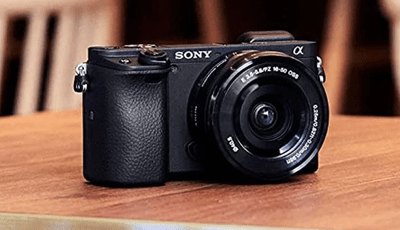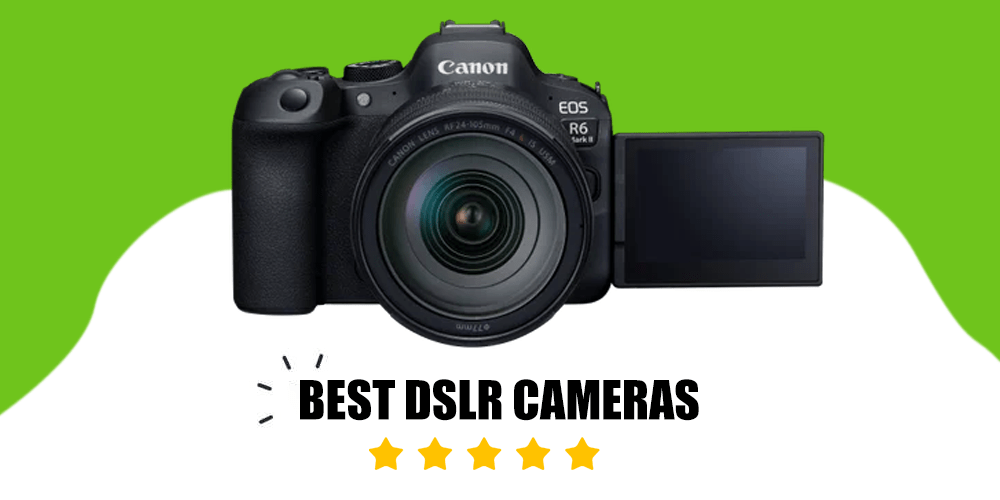
Different minds require different DSLRs; A beginner, an Enthusiast, and A professionals, whatever type you are. You’ll find your perfect and best DSLR camera of 2024; that’s my promise to you. However, the only thing that I want from you is to go through this article.
In this DSLR buying guide, I have the ten best DSLR cameras for you, of course, the top ones of 2023. Why only ten? Since most DSLR lovers have a specified budget to spend, a single DSLR camera recommendation won’t be a fair decision. Therefore, I have reviewed the top ten with the ten different budget options in mind.
But Before The Reviews, Take a Look At The Comparison Table
What makes DSLR cameras better than mirrorless or other category cameras.
Undoubtedly, mirrorless cameras are superior in terms of technologies and features; they’re more popular among people around the globe; therefore, major manufacturers also pay more attention to developing mirrorless technologies.
However, DSLR cameras have their own world because of plenty of megapixels, smart connectivity—Wi-Fi, battery life, ergonomic design, and many others. Moreover, if you have the best DSLR camera, you can shoot 4K videos. Such high-end DSLRs also offer different live modes and on-sensor phase-detect Autofocus.
Another important and noticeable feature that you get on DSLRs is an optical viewfinder. It allows you to look through to view the scene before the camera. In other words, you don’t need to see a digital-generated image every time as you do with a mirrorless camera.
Now, let’s come to the topic, and let me share some of the top DSLR cameras of 2023.
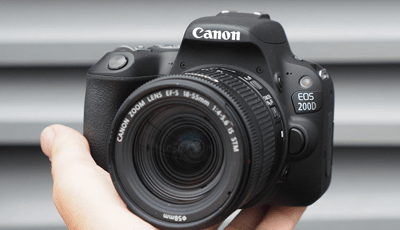
Canon EOS 200D II
Features
- Resolution: 24.1MP
- Form Factor: DSLR
- Viewfinder: Optical
- Display size: 3 Inches
The Canon EOS 200D II is the perfect choice for capturing life’s special moments in stunning detail. This camera is equipped with a 24.1 megapixel APS-C CMOS sensor, allowing it to take crisp and vibrant images even in low light conditions.
Its Dual-Pixel-CMOS AF system provides fast and accurate autofocus, ensuring your photos are always in focus. The kit also includes an EF-S 18–55mm f/4–5.6 IS STM lens which gives you tremendous versatility when shooting wide-angle or telephoto shots. The DIGIC 8 image processor gives you a fast and powerful performance to easily capture burst shots and Full HD movies.
The Canon EOS 200D II also features a rear 3.0 inch LCD touchscreen with a 180-degree tiltable design, allowing you to take selfies and videos easily. The display’s high resolution ensures you can accurately review your images and see every detail. You can also easily share your photos and videos via Wi-Fi or Bluetooth.
The Canon EOS 200D II is the perfect camera for budding photographers, offering excellent quality images in a compact size, making it easy to take everywhere. With all these features, you’ll surely get professional results every time.
Pros
- 24.1 MP APS-C CMOS sensor and DIGIC 8 image processor for high-resolution images with brilliant color accuracy
- Improved Dual Pixel CMOS autofocus system for accurate focusing in any situation
- High-speed continuous shooting up to 5fps
- Vari angle LCD touchscreen for easy operation and convenience
- Wi-Fi, Bluetooth, and NFC connectivity for remote control and sharing photos quickly
- Compact size makes it highly portable
Cons
- Not weather sealed
- Limited burst shooting speed of 5fps
- No in-body image stabilization (IBIS) technology
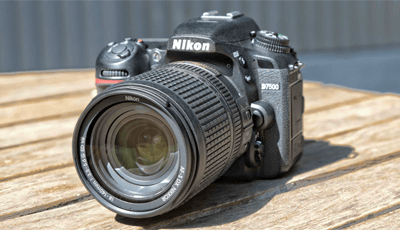
Nikon D7500
Features
- Resolution: 20.9MP
- Form Factor: DSLR
- Viewfinder: Optical
- Display size: 3 Inches
The Nikon D7500 20.9MP Digital SLR Camera is a popular choice for many photographers who want an advanced, user-friendly DSLR camera. It features an APS-C-sized CMOS sensor that produces excellent image quality, a wide ISO range of 100-51,200, 8 fps continuous shooting, and 4K video recording at 30fps or 1080p at up to 60fps.
The camera also has Wi-Fi, NFC, and Bluetooth connectivity, allowing users to quickly share their images and videos with friends and family on social media. Additionally, the Nikon D7500 uses the same autofocus system as its predecessor, the D7200, which gives users greater accuracy when using it in low-light conditions.
The Nikon D7500 also comes with various built-in shortcut functions, including Auto ISO, Active D-Lighting, Picture Control, and other settings that allow users to adjust their camera settings quickly. The 3.2-inch LCD screen is tiltable and has excellent visibility even in direct sunlight, which makes it perfect for outdoor photography.
Overall, the Nikon D7500 20.9MP Digital SLR Camera is an excellent option for an advanced, user-friendly DSLR camera with excellent image quality, fast autofocus, and 4K video recording capabilities. It is a good choice for amateur photographers and more experienced professionals.
Pros
- 20.9 megapixel CMOS sensor that offers excellent image quality and low light performance
- 4K UHD video recording capabilities, making it an excellent choice for videographers
- Fast autofocus system with 51 AF points and 15 cross-type sensors
- Rugged construction, weather sealing, and wide-range ISO settings make it suitable for shooting in any environment
- Variety of creative functions such as time-lapse, multiple exposure, HDR mode, and RAW processing
Cons
- No built-in flash or autofocus motor for older lenses without an AF-S motor
- Not suitable for professional videographers due to its limited video recording capabilities.
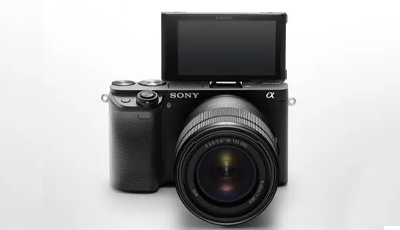
Sony Alpha ILCE-6400M
Features
- Resolution: 24.2MP
- Form Factor: DSLR
- Viewfinder: Optical
- Display size: 3 Inches
The Sony Alpha ILCE-6400M is an excellent choice for photographers looking for a high-quality, full-featured camera that won’t break the bank. This model features a 24.2 megapixel APS-C Exmor CMOS sensor, BIONZ X image processor, and Fast Hybrid AF system, which helps to provide sharp images and accurate autofocus even in low light conditions.
It also features 4K recording capabilities, allowing you to capture stunning ultra-high-definition video. It can record up to 30fps in 4K and 100Mbps in 3840×2160 resolution. Additionally, the camera has a built-in microphone and headphone jacks to easily monitor audio.
Additionally, the camera has a 3″ tiltable LCD touchscreen monitor and an electronic viewfinder to help you compose your shots perfectly. It also offers Wi-Fi and NFC connectivity to share your images with family and friends easily. The 18-135mm power zoom lens offers a broad range of focal lengths, from wide-angle to telephoto, making it an ideal choice for capturing landscapes or distant subjects.
The Sony Alpha ILCE-6400M is designed to be lightweight but durable, featuring a tough magnesium alloy construction that can handle the rigors of everyday use. The camera is also dust and moisture-resistant, which can withstand wet or dusty conditions without damaging the body.
The 18-135mm power zoom lens also allows you to quickly adjust your focus point without moving your feet or adjusting the camera’s position. This makes it especially useful when shooting fast-paced events such as sports games where you may need to quickly switch between different angles in order to capture the action. Additionally, the lens includes image stabilization to reduce camera shake and blur in your images.
Pros
- Advanced Autofocus system providing precise and accurate tracking of moving subjects
- 24.2MP APS-C Exmor CMOS Sensor for excellent image quality
- High-speed continuous shooting up to 11 frames per second
- 4K video recording with full pixel readout and no pixel binning
- 180° tiltable LCD touchscreen for unique angles or self-portraits
- Built-in Wi-Fi, NFC, and Bluetooth connectivity for easy sharing of images/videos
- Compact and lightweight design ideal for travel photographers
Cons
- Limited lens selection when compared to other mirrorless camera systems
- Limited buffer depth for continuous shooting (only 30 shots)
- Autofocus might struggle in low-light situations.
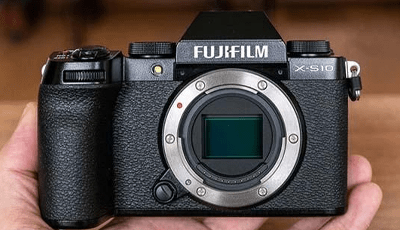
Fujifilm X-S10
Features
- Resolution: 26.1MP
- Form Factor: Mirrorless
- Viewfinder: Electronic
- Display size: 3 Inches
The Fujifilm X-S10 is an excellent camera for capturing stunning photos and videos. The X-S10 features an advanced 26.1MP CMOS 4 Sensor and the latest X Processor 4, allowing you to capture beautiful high-resolution images with incredible speed and accuracy. With its 5-axis in-body image stabilization and up to 8fps continuous shooting, you can capture crisp shots of even the most active scenes.
The XF18-55mm lens produces sharp images from edge to edge, while its fast autofocus ensures your subjects stay focused no matter how quickly they move. This lens also has a maximum aperture of f/2.8-4, allowing you to capture stunning low-light images and beautiful bokeh effects.
It can record videos in 4k resolution at up to 30fps, giving you stunningly sharp and clear footage. It also supports recording up to 240 frames per second in full HD, allowing you to capture slow-motion shots with smooth transitions. Additionally, the camera has a Decent battery life of up to 400 shots per battery charge. This makes it an ideal companion for long days of shooting and travel.
The X-S10 also features an ergonomic design that is comfortable in your hands, making it easy to hold for extended periods. The body’s weather-sealed design means you can take this camera into all kinds of conditions without fear of damage from dust or moisture. And its intuitive controls make it easy to adjust settings quickly, so you can focus on capturing amazing shots instead of fussing with buttons and dials.
Pros
- High-resolution 26.1-megapixel APS-C sensor with excellent image quality
- Fast and accurate autofocus system with Face/Eye AF tracking
- 5-Axis In Body Image Stabilization (IBIS) to reduce camera shake when shooting handheld
- 4K/30p video recording capability with F-Log flat profile and 10-bit output via HDMI
- Interval timer, time-lapse recording, and focus stacking options for creative photography
Cons
- Heavyweight compared to other mirrorless cameras in its class
- Limited selection of native Fujifilm lenses available
- Battery life could be better, and no support for external battery packs
- LCD screen cannot tilt or swivel, which can make composing difficult in specific scenarios
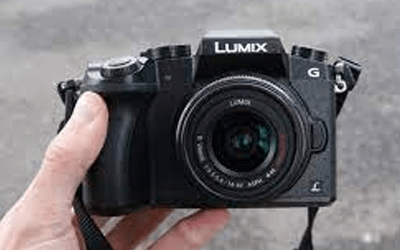
Panasonic LUMIX G7
Features
- Resolution: 16MP
- Form Factor: Mirrorless
- Viewfinder: Electronic
- Display size: 3 Inches
The Panasonic LUMIX G7 is an excellent choice for beginner photographers looking to upgrade their camera game. This 16-megapixel mirrorless camera has 4K video recording capabilities, making it ideal for those wanting to capture stunning 4K footage. It also features a Micro Four Thirds sensor and uses contrast autofocus to quickly and accurately focus on your subject. The interchangeable lens system allows you to customize the camera to fit your needs, whether you are shooting landscapes or portraits.
It features a high-resolution LCD and an electronic viewfinder. The 3-inch screen is designed to be easily viewed in bright sunlight, and the 1,040k-dot equivalent viewing angle makes it easy to compose shots from any angle. The camera also boasts a smooth 60fps refresh rate for tracking fast-moving subjects. The Panasonic LUMIX G7 also has a variety of creative modes for users to explore, including creative panorama, time-lapse, and stop-motion functions. This allows you to capture stunning visuals that you can share easily with friends or post online.
With the included 14-42 mm lens, you can capture detailed images even from far away distances, making it an ideal choice for outdoor photography. The kit also includes a flash unit that helps create beautiful lighting effects, allowing amateur photographers to take stunning photos easily. It has built-in Wi-Fi connectivity, allowing you to instantly share your photos on social media or access them from any device. For those wanting manual control over their shots, the camera also supports manual settings, giving you complete control over your photos. With its intuitive controls and easy-to-use features, the Panasonic LUMIX G7 is an excellent choice for photographers of all levels.
Pros
- 16.00 MP 4K Mirrorless Camera with incredibly sharp images and smooth video recording
- Fast response time for capturing split-second moments
- Lightweight and compact design, ideal for traveling and everyday use
- Variety of advanced features, including high-speed autofocus and 4k photo mode
- Full range of manual controls for experienced photographers
Cons
- Relatively short battery life compared to other mirrorless cameras in the market
- Limited lens selection compared to other brands
- No external mic jack on the body itself, requiring an additional accessory to record audio from an external source
- Not as customizable as other more expensive models available in the market.
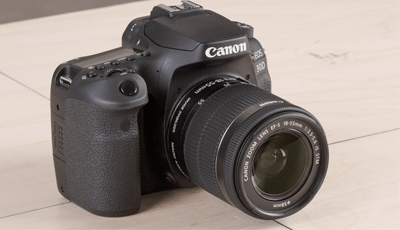
Canon EOS 90D
Features
- Resolution: 32.2MP
- Form Factor: DSLR
- Viewfinder: Optical
- Display size: 3 Inches
The Canon EOS 90D Digital SLR Camera is equipped with a 32.5-megapixel APS-C CMOS sensor that produces detailed images with accurate colors and sharp details even in low light conditions. Thanks to its 45 all cross-type AF points, the camera captures quick, accurate autofocus even when using the Live View feature. Additionally, advanced features like Eye AF and 4K/30p video recording bring convenience to photographers looking to capture high-quality images and videos.
It is equipped with a new 220,000-pixel AE sensor and EOS Intelligent Tracking & Recognition AF. This technology allows the camera to detect faces in scenes and better track subjects for accurate focus tracking when using Live View or shooting video. The EOS iTR AF also helps improve accuracy when shooting in low-light conditions. Additionally, the new AE sensor improves exposure metering accuracy across a wide range of lighting conditions and scenes.
Canon EOS 90D also features a convenient , Fully articulated LCD 3.0-inch LCD monitor, allowing shooters to capture unique angles and take advantage of the camera’s versatile shooting modes. Users can also access a range of creative filters and shooting modes to bring extra flair to their images.
When combined with quality lenses such as the EF-S 18-55mm f/4-5.6 IS STM Lens or the EF 50mm f/1.8 STM Lens, shooters are sure to capture stunning photographs that will last a lifetime. With features like built-in Wi-Fi and Bluetooth technology, sharing your photos with friends and family is easier. For photographers looking for a dependable, versatile camera that produces stunning results, the Canon EOS 90D Digital SLR Camera is an excellent choice.
Pros
- High-resolution 32.5MP CMOS sensor and DIGIC 8 image processor for impressive performance
- 10 fps continuous shooting with full AF/AE tracking for up to approximately 21 raw images or 130 JPEGs
- 4K UHD 30p & Full HD 120p video recording
- Live View Autofocus system with Dual Pixel CMOS AF
- 45-point all cross-type autofocus system (EV -3 sensitivity)
- 3″ Fully articulated LCD Touchscreen LCD monitor with 1,040k dots resolution
- Dual Card Slots; SD and CFexpress Type B cards supported
Cons
- Continuous shooting speed of 10 fps is not the highest in the market
- Does not feature a top LCD panel display
- Price is relatively high compared to other cameras with similar specs.
The Canon EOS 90D Digital SLR Camera is equipped with a 32.5-megapixel APS-C CMOS sensor that produces detailed images with accurate colors and sharp details even in low light conditions. Thanks to its 45 all cross-type AF points, the camera captures quick, accurate autofocus even when using the Live View feature. Additionally, advanced features like Eye AF and 4K/30p video recording bring convenience to photographers looking to capture high-quality images and videos.
It is equipped with a new 220,000-pixel AE sensor and EOS Intelligent Tracking & Recognition AF. This technology allows the camera to detect faces in scenes and better track subjects for accurate focus tracking when using Live View or shooting video. The EOS iTR AF also helps improve accuracy when shooting in low-light conditions. Additionally, the new AE sensor improves exposure metering accuracy across a wide range of lighting conditions and scenes.
Canon EOS 90D also features a convenient , Fully articulated LCD 3.0-inch LCD monitor, allowing shooters to capture unique angles and take advantage of the camera’s versatile shooting modes. Users can also access a range of creative filters and shooting modes to bring extra flair to their images.
When combined with quality lenses such as the EF-S 18-55mm f/4-5.6 IS STM Lens or the EF 50mm f/1.8 STM Lens, shooters are sure to capture stunning photographs that will last a lifetime. With features like built-in Wi-Fi and Bluetooth technology, sharing your photos with friends and family is easier. For photographers looking for a dependable, versatile camera that produces stunning results, the Canon EOS 90D Digital SLR Camera is an excellent choice.
Pros
- High-resolution 32.5MP CMOS sensor and DIGIC 8 image processor for impressive performance
- 10 fps continuous shooting with full AF/AE tracking for up to approximately 21 raw images or 130 JPEGs
- 4K UHD 30p & Full HD 120p video recording
- Live View Autofocus system with Dual Pixel CMOS AF
- 45-point all cross-type autofocus system (EV -3 sensitivity)
- 3″ Fully articulated LCD Touchscreen LCD monitor with 1,040k dots resolution
- Dual Card Slots; SD and CFexpress Type B cards supported
Cons
- Continuous shooting speed of 10 fps is not the highest in the market
- Does not feature a top LCD panel display
- Price is relatively high compared to other cameras with similar specs.
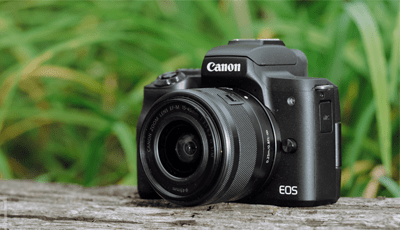
Canon EOS M50 Mark II
Features
- Resolution: 24.1MP
- Form Factor: Mirrorless
- Viewfinder: Electronic
- Display size: 3 Inches
This camera is an excellent choice for photographers who want the convenience and flexibility of a mirrorless camera with the power and performance of a DSLR. With its 24.1 megapixels APS-C CMOS sensor, Dual Pixel Autofocus technology, 4K UHD video recording capabilities, and more, the Canon EOS M50 Mark II delivers stunning images with exceptional detail. The camera body features ergonomic design elements that make it comfortable to handle and easy to control. Its intuitive menu system helps you quickly find what you need so that you can focus on capturing those special moments.
The Canon EOS M50 Mark II has an ISO range of 100 to 25600, allowing photographers better to manage their images’ light and dark portions. With this wide range, users can capture detailed photos in a variety of lighting conditions with minimal noise or graininess. It also offers continuous shooting up to 12 frames per second, enabling you to capture fast-moving subjects easily. With its advanced autofocus system, you can quickly and accurately lock focus on your subject with minimal delay.
Additionally, this camera has a built-in OLED electronic viewfinder that provides clear visibility even in bright lighting conditions and features Face Detection Technology for precise focusing on faces within the frame. Plus, with built-in Wi-Fi and Bluetooth connectivity, sharing your photos with friends and family has never been easier. Whether you’re shooting nature, portraits, weddings, or everyday life, the Canon EOS M50 Mark II will help you capture your vision in beautiful detail and share it with the world.
The Canon EOS M50 Mark II also features a variety of interchangeable lenses that are compatible with the camera’s imaging system. With these lenses, you can expand your creative possibilities, capturing unique perspectives or getting closer to subjects than ever before. Whether you’re looking for wide-angle shots, close-up macro photography, or long telephoto images, the right lens is available to bring your vision to life. With its impressive features, the Canon EOS M50 Mark II is sure to be a popular choice among amateur and professional photographers.
Pros
- 24.1 megapixels APS-C CMOS sensor for superior image quality
- Fast autofocus with 143 AF points and eye detection AF
- 4K UHD video recording at up to 30 fps
- Improved Dual Pixel CMOS Autofocus (DPAF) with Movie Servo AF
- Vari angle 3.0-inch Touchscreen LCD
- Built-in Wi-Fi and Bluetooth connectivity
Cons
- Slow burst shooting rate at only ten frames per second
- No headphone jack for monitoring audio while recording videos
- Low battery life of only 235 shots per charge
- Short battery life on 4K video recording
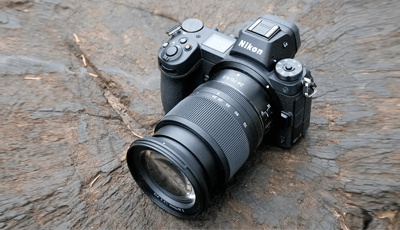
Nikon Z6 Mark II
Features
- Resolution: 24.5MP
- Form Factor: Mirrorless
- Viewfinder: Digital
- Display size: 3.2 Inches
The Nikon Z 6II Mirrorless Digital Camera with Z 24-70mm f/4 Lens is a powerful and capable camera system. With an impressive 24.5MP resolution, this camera delivers great-quality photos and videos that impress anyone. The EXPEED 6 image processor, coupled with the fast autofocus system and low-light ISO range of 100-51,200, makes capturing stunning images easy in light conditions. Also included is the versatile NIKKOR Z 24–70mm f/4 S lens, which gives you plenty of range for all types of photography, no matter your subject. Built-in 5-axis Vibration Reduction (VR) helps keep video recordings steady during motion and helps reduce camera shake in still images.
The Nikon Z 6II also offers 4K UHD video recording up to 30fps. This allows you to capture beautiful footage in fantastic clarity. The camera also supports slow motion recording at Full HD resolution up to 120p, allowing you to capture smooth, detailed action shots and videos. Other features, such as built-in time-lapse video recording, picture control profiles, flat picture profiles, and multiple exposure modes, enhance the capabilities of this powerful digital camera system.
The Nikon Z 6II Mirrorless Digital Camera has dual memory card slots capable of storing high-quality photos and videos, which can then be easily transferred to a computer or other device via a USB-C cable. Furthermore, the camera also supports Wi-Fi connectivity for quick and easy sharing with compatible devices. For additional convenience, you can use the Nikon SnapBridge app to transfer images at high speed from your smartphone or tablet. With its impressive features and performance, the Nikon Z 6II Mirrorless Digital Camera is perfect for capturing memorable moments no matter where you go.
Pros
- 24.5MP BSI CMOS sensor
- UHD 4K60p video recording with 10-bit N-Log gamma and 4K time-lapse recording
- Dual EXPEED 6 image processors
- 273 on sensor autofocus points providing fast and accurate focusing
- 5 axis in body stabilization allowing for sharper images when shooting handheld
- 2.36M dot OLED viewfinder with 0.8x magnification and eye detection AF
- Tilting 3.2″ touchscreen LCD with 2,100k dots resolution
- Compatible with existing F-mount lenses using an adapter
Cons
- Expensive compared to other models on the market
- No in-camera flash
- The menu system can be challenging and unintuitive to navigate at first.
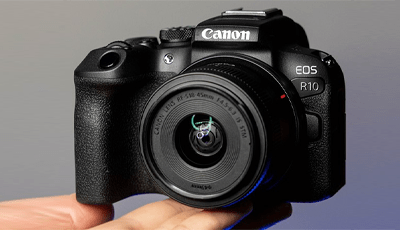
Canon EOS R10
Features
- Resolution: 24.2MP
- Form Factor: Mirrorless
- Viewfinder: Electronic
- Display size: 3 Inches
The Canon EOS R10 24.2MP Mirrorless Digital Camera is a powerful and versatile camera for photographers of all levels. This mirrorless digital camera offers full-frame performance with an impressive 24.2-megapixel resolution, great low-light sensitivity, fast autofocus, and dual-pixel CMOS AF technology to quickly capture sharp images in any situation. The EOS R10 includes a robust range of features such as 4K video recording, Dual Pixel RAW, Focus Bracketing, and much more.
This camera offers an incredible ISO range of 100-102400 for expanded low-light and fast-action capabilities. With the camera’s complete manual control, you can easily adjust exposure settings and achieve accurate results in any shooting environment. The EOS R10 also provides advanced image processing functions such as High Dynamic Range (HDR) and Multiple Exposure modes, making it easy to create stunning professional quality photos every time.
Additionally, its Wi-Fi connectivity allows users to instantly share images online or with compatible devices like smartphones and computers. It also has an intuitive touchscreen interface that makes it easy to review and edit photos on the go. It is lightweight and portable, making it ideal for professional and amateur photographers.
The Canon EOS R10 has various lens options, including standard zoom, wide-angle, telephoto, and macro lenses. This flexibility allows you to capture images from various perspectives and distances. It is also compatible with Canon EF-S and EF lenses, making it an excellent option for those who already own Canon lenses or want to expand their collection.
Pros
- 24.2MP full-frame CMOS sensor and DIGIC X image processor
- UHD 4K60 video recording with 10-bit 4:2:2 Canon Log or HDR PQ support
- Dual Pixel CMOS AF delivers fast, accurate autofocus tracking of both stills and video
- 5.76m dot OLED EVF with 120 fps refresh rate and 100% coverage
- 3-inch Vari-angle touchscreen LCD monitor with full touch and drag AF system
- Built-in Wi-Fi, Bluetooth, NFC, and GPS for location tagging and easy image transfer
- Dual UHS-II SD card slots provide extended storage capacity and versatility
Cons
- Limited low-light autofocus performance
- Touchscreen functions are limited compared to other cameras of its class
- No headphone jack for monitoring audio during recording
DSLR Camera Buying Guide: What to search for in a DSLR Camera?
When looking for the best DSLR camera, you’ll have to go through several buying factors, such as lenses, different types, sensor size, grades, image processors, Autofocus, image stabilization, Viewfinders, video recording, etc.
Lenses
Keeping the lens buying factor in the first position shows its importance. A compatible system of lenses should be the main factor for everyone as they play a major role in photography. Moreover, they distinguish between normal photos and professionally rendered photos.
Since the image quality of a DSLR is affected by the lenses, you better go for the one compatible with different lenses available on the market.
So if you want your DSLR camera to elevate the reality of imagery, make sure you pay attention to the compatible system of lenses.
The Sensor
The general rule is that the bigger the sensor, the faster the shutter speeds, and the less noise generated. Bigger sensors deliver better image quality, plain and simple.
Nevertheless, don’t splurge on the biggest camera you can find, thinking you’ll be investing in quality photography. A DSLR is only as good as the person behind it, so investing in a full-frame sensor, which can be extremely pricey, won’t be wiser than settling for an APS-C-sized sensor that you can easily learn how to use.
Megapixels
Let’s get one thing straight: as a photographer, you should never believe the myth that more megapixels mean better image quality. Megapixels become relevant when you want to print your work (or when taking pictures of birds, which sometimes necessitates digital zooming).
If you plan on selling your photographs in life-size dimensions, then, by all means, get as many megapixels as you need. However, that shouldn’t be a concern if all you’re after is taking beautiful snaps for social media.
Budget
They say you should set a budget before buying a DSLR. That’s terrible advice. How on earth can you estimate the price of a DSLR if you don’t even know what suits you?
Here’s a better way to go about it: look up the most user-friendly options around, then compare prices. You’re more likely to get something that you’ll get accustomed to quickly and possibly take fantastic pictures with if you don’t go in with a set price.
There’s a high risk of overpaying for a DSLR that will be too much to handle, so it’s important to know which camera suits you. I’m talking about beginner-level cameras, of course; I assume intermediates and experts already have an idea of what they want.
Future Upgrades
Manufacturers routinely discontinue DSLR cameras. That means no software upgrades, no revamped bodies, and—crucially—no more compatible lenses.
Other features to consider
Autofocus
Shutter speed is incredibly important for perfect image quality. DSLRs come with autofocus systems for this exact reason. The higher the AF points, the faster the camera, and vice versa. However, if you’re just starting out, don’t focus too much on this.
Connectivity
Connectivity is vital if you intend to shoot your images to the cloud or instantly share them with your devices. That’s why most photographers these days spring for something with wireless connectivity—it’s well worth the extra bucks.
Accessories & Tools
All you need is a decent camera bag that’s big enough to hold at least two spare lenses. Also, a good photographer always carries a spare battery, just in case. Having an extra memory card (2GB or larger) is also advisable, as is owning a clear filter for your lens.
Other important tools include a lens cleaning kit and a mechanical blower. The last thing you want is dusty or dirty lenses.
Which Brand Should I Go For?
Although several camera manufacturers are worth their salt, I recommend picking up a Canon or a Nikon for your first DSLR. The reason is simple.
You can’t just use any lens on your DSLR; it has to match the camera. Canon and Nikon DSLRs have an expansive range of lenses and accessories, so you can rest easy knowing that you can upgrade your photography kit endlessly.
These two manufacturers have some of the best DSLRs in the world. They’ve pretty much set the standard as far as digital photography goes, and ten years from now, they’ll probably still be the best in the business.
DSLR vs. Mirrorless Camera: Which One Should You Buy?
If someone had asked me to choose between a DSLR and a mirrorless camera when I was starting, I’d have jumped head-first onto the mirrorless bandwagon and never looked back.
They’re more compact, more beginner-friendly, more “professional,” more everything. They’re generally capable of high-resolution video recording and come equipped with impressive AF systems. I could have seriously used an electronic viewfinder when I was learning to adjust my parameters. Mirrorless cameras are just easier to master.
That’s not to say that an entry-level Nikon or Canon DSLR won’t take you places. But even though they have pretty good sensors, touchscreens—the whole kit and caboodle—there’s always a learning curve involved, especially if the live view feature is lacking.
What to choose? CMOS or CCD?
We could go on for days about which of these two sensors is better. The bottom line is that CCD sensors consume more power but produce higher-quality images, but CMOS sensors produce high-resolution images at minimum power consumption.
If you really need a camera with a CCD sensor, then be ready to deal with something bulkier, heavier, and possibly with terrible battery life. On the other hand, the more efficient CMOS sensor is still capable of top-notch image quality, but it doesn’t have the processing power to match the clarity and high-res production of a CCD.
If you’re unsure where to land, start with a CMOS sensor. Not only is it cheaper, smaller, and less power-hungry, but it is capable of amazing photo quality, especially when equipped with a decent image processing engine.
FAQs: What Do People Often Ask About DSLR Cameras?
Does every camera lets you do vlogging?
Not every camera is made for vlogging—a fact that I learned the expensive way. If you want something specifically for videos, you need a camera with an excellent video AF system, 4K shooting capabilities, and a decent microphone.
Do different cameras serve different purposes? How to decide?
Of course, they do. Think about what you want a camera for. Still photography? Action shots? Vlogging? Every camera has its strengths and limitations as far as design and functionality are concerned.
What camera type is user-friendly? Mirrorless or DSLR?
Mirrorless cameras are generally more user-friendly than DSLRs and tend to have better AF systems, even in video recording.
Such a camera would be excellent for vlogging, unlike a DSLR with a full-size sensor, which would be more suited for high-end professional photography.
Should I consider the connectivity of a camera?
A camera that pairs seamlessly to your devices via Bluetooth, NFC, or Wi-Fi is generally easier to work with. You can back up your work on the cloud or send them to your computer for safekeeping at the push of a button.
That’s why it’s important to consider a camera’s connectivity because it determines how easy it will be to transfer your work.
Do the lenses of a camera make a huge difference?
A camera is just a body; the lenses create stunning art. Lens compatibility is, therefore, crucial. If you buy a camera with endless lens options, it might not dip in value, especially if the manufacturer keeps updating it.
Lens choices are also vital because of image stabilization. Some lenses come with in-built systems; others rely on your cameras, and some use both.
Conclusion: Best DSLR Cameras
In conclusion, the top 10 DSLR cameras above have features that make them stand out from the rest. However, each camera has its unique capabilities that may appeal to different types of photographers.
The best way to find the right camera for you is to research each one thoroughly and decide which features are most important to you.
Once you’ve narrowed down your choices, take some time to read online reviews and test out the cameras in person before making your final decision.
Thanks for reading, and please leave any questions or thoughts in the comments below!

